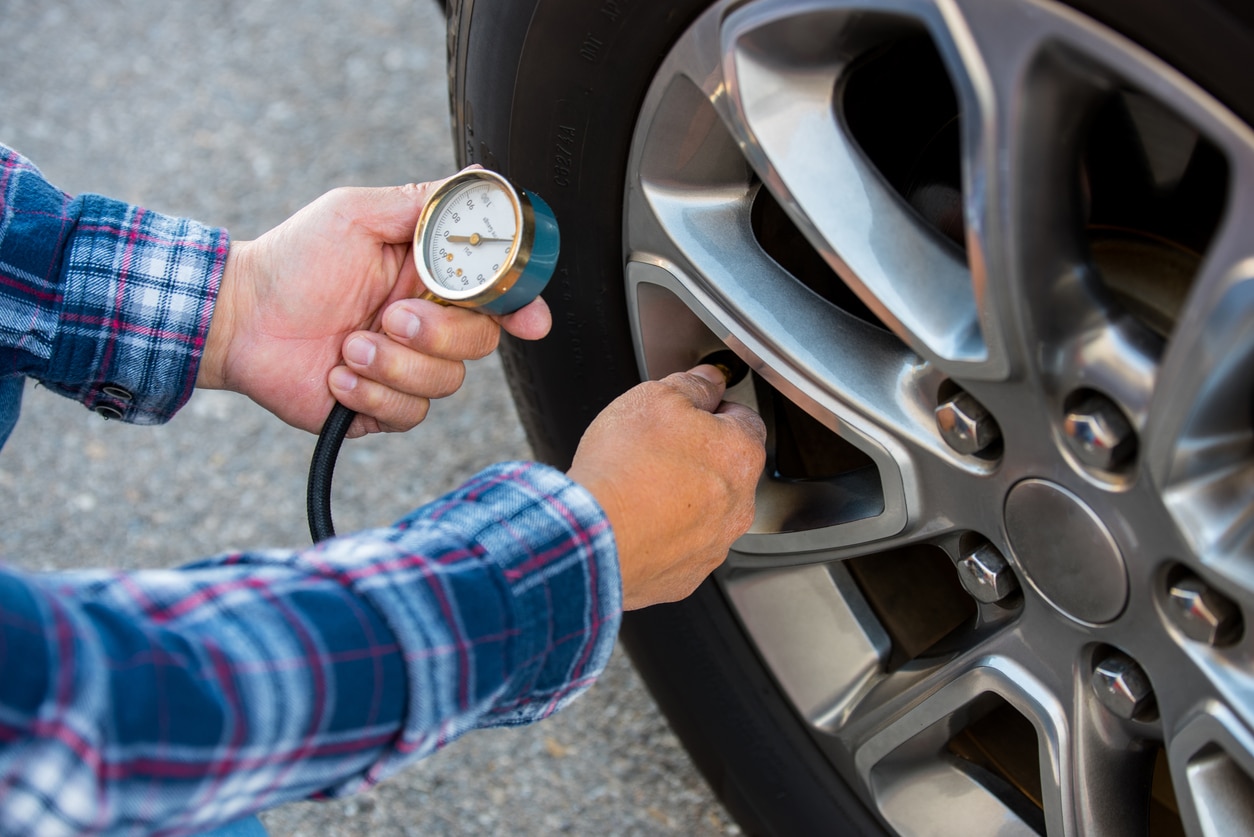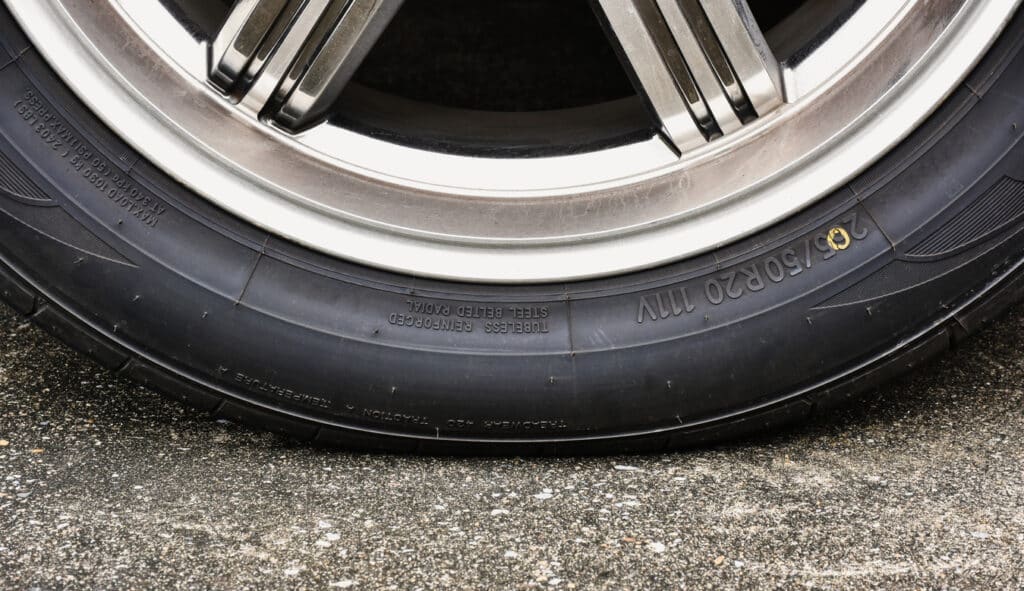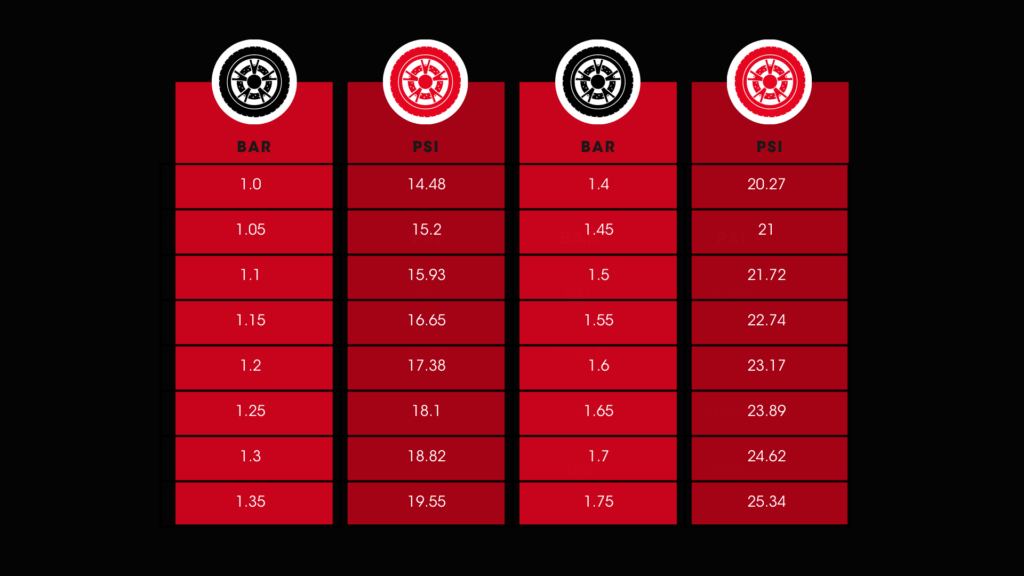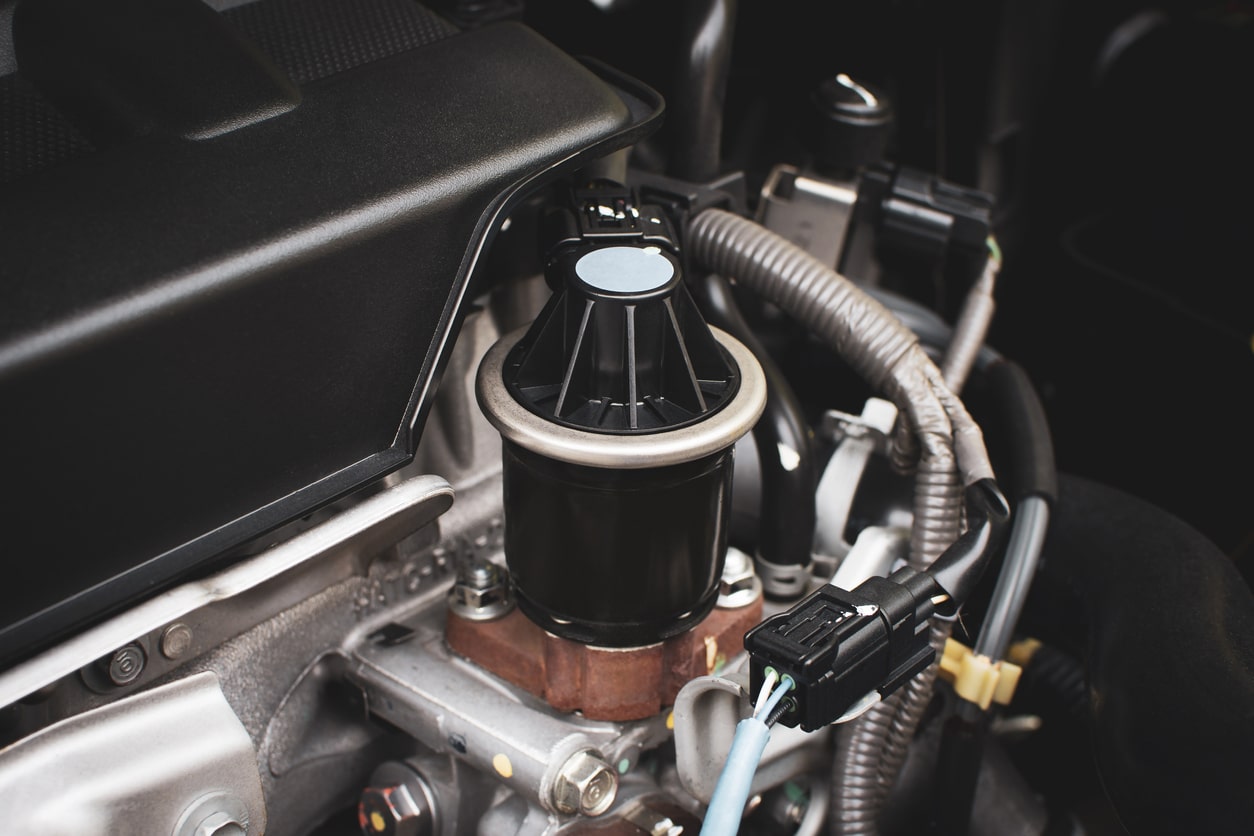Changing temperatures can cause tyres to lose and gain pressure, to the point where many drivers unwittingly ride around with either under or over-inflated tyres.
So, how can you mitigate the impact of the weather and ensure your tyre pressure remains at the correct level? This guide will cover the importance of correct tyre pressure and how changing temperatures can impact tyre pressure. We’ll also throw in some tips to help you navigate the changing PSI in different weather conditions and when you might need to add or release some pressure.
Quick Links
- Why is it Important to Have the Correct Tyre Pressure?
- Tyre Pressure in Cold Weather
- Tyre Pressure in Hot Weather
- Car Tyre Pressure Chart
- Maintaining Tyre Pressure Across Changing Temperatures
Why is it Important to Have the Correct Tyre Pressure?
Tyre pressure is measured by calculating how much air has been pumped into the inner lining in pounds per square inch (PSI) or BAR pressure. Car manufacturers will specify the optimal pressure for the tyres on your car, which is normally found inside the driver’s door and in the owner’s manual.
Maintaining the correct tyre pressure for your car will not only extend the lifespan of your tyres, but it will also improve safety and fuel efficiency.
As the driver, it’s your responsibility to ensure the pressure of all four tyres is checked regularly and continuously set to the correct level. We recommend carrying out these checks fortnightly to ensure you maintain optimum tyre pressure.
Finding that they’re regularly losing a significant amount of pressure? You could have a slow puncture and might need to get a replacement.
While underinflation can be an issue, overinflation can cause just as many issues with handling, fuel efficiency and wear and tear.
Tyre Pressure in Cold Weather
Tyres should be checked more often during winter since cold temperatures can cause pressure to drop. Your tyres are likely to become under-inflated if tyre pressure is down, which can cause various issues.
Tyres can lose up to 2% of their air pressure for every 5.5°C the temperature drops. Cold weather raises the density level of the air, causing air pressure to fluctuate.
Maintenance checks on the tyres and wheels should be carried out before the colder weather rolls in. Want to prepare your car for the chilly months? Read our DIY maintenance checks to do before summer ends.
What Can be Affected by Under-Inflated Tyres in Cold Weather?
During winter, you might see the tyre pressure warning light pop up more often than normal. While the light will usually go off after driving for a few minutes as the pressure returns to normal when your tyres heat up, extreme cold temperatures can continue to impact the wheels.
Here are some of the main areas that are affected:
Wheel traction
Since tyres lose pressure in cold weather, wheel traction can be reduced. The effectiveness of safety features – such as traction control – can be severely reduced if this is the case. Driving on snow, ice or in heavy rain with reduced wheel traction can increase the risk of skidding or losing grip on the road.
Uneven road contact
Under-inflated tyres can have uneven contact with the road, causing excessive wear on the inside and outside edges of the tread if left under-inflated for an extended period. The longevity of the tyres will significantly reduce with this type of wear and tear.
Increased rolling resistance
Fuel efficiency and increased CO2 emissions can be a by-product of increased rolling resistance from under-inflated tyres since the engine needs to work harder.
Tyre Pressure in Hot Weather
Hot weather has the opposite effect on tyre pressure – it’s more likely to increase. During summer, you’ll need to check the PSI regularly to prevent the risk of over-inflation.
An increase in temperature of 5.5°C has the potential to raise tyre pressure by up to 2% due to higher air density.
What can be Affected by Over-Inflated Tyres in Hot Weather?
Overinflation can cause a few similar issues to underinflation, only for different reasons.
Here are some of the key areas affected…
Smaller contact patch
Too much air in the tyres can lead to a loss of traction and increased braking distances.
Uneven wear
The central part of the tyre is more likely to experience heavy and uneven wear because of the increased pressure. If this is the case, the tyres will likely have a shorter lifespan – as they will with underinflation, too.
Handling and fuel economy
Over-inflated tyres can reduce fuel economy and handling performance alongside the increased risk of blowouts. The pressure of the tyres can influence efficiency and safety, stressing the importance of checking that neither is compromised.
Braking can also be affected by overinflated tyres since rolling resistance is reduced.
Car Tyre Pressure Chart
BAR and PSI are the pressure units used by car manufacturers to specify the correct tyre pressure for a particular vehicle. Convert between the two using our chart below:
Maintaining Tyre Pressure Across Changing Temperatures
In cold or hot weather, there are a few ways to help maintain the correct pressure levels:
- Avoid hazards– Potholes and debris on the road can cause losses in air pressure and even punctures.
- Regularly check the condition – Look for small punctures or damage around the tyre that could potentially affect the condition.
- Add or remove air routinely– Counter the natural pressure losses in cold temperatures by regularly adding air. Similarly, during the summer months, release air as required to maintain the correct pressure.
We hope this guide helps you maintain optimum tyre pressure throughout the seasons. Don’t forget to keep a can of Holts Tyreweld in your car for those unexpected punctures out on the road. Visit our blog for more car maintenance guides and motoring advice or browse our complete product range here.






